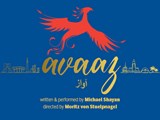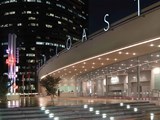By Brian Robin
What is Nowruz?
When you meet Roya, the wonderful hostess of avaaz by Michael Shayan, she’s welcoming you into her home to celebrate Nowruz, the Iranian New Year.
Yes, you get sidetracked, as Roya takes you on her great American journey from Tehran to “Tehran-geles,” California. But as she’s regaling you with her funny, deeply personal and poignant story, she’s paying attention to the reason for her hospitality—Nowruz.
What is Nowruz and why is it such a special day to Iranians around the world?
It’s a special day to more than Iranians. Celebrated on the spring equinox (March 21), Nowruz’s roots go back more than 3,000 years. Its roots come from Zoroastrianism, a religion founded in ancient Persia that predates Christianity and Islam.
The United Nations cultural agency (UNESCO) added Nowruz to its Representative List of the Intangible Cultural Heritage of Humanity. In 2010, the UN General Assembly proclaimed March 21 as International Nowruz Day.
And those deep roots extend beyond Iran. Nowruz has been celebrated throughout Western, Central and South Asia. It’s part of the fabric of the Caucasus region, the Black Sea Basin and as far west as the Balkan states of Eastern Europe. But major Western cities, such as Los Angeles, Toronto and London, also hold major Nowruz celebrations.
That rich cultural tapestry is celebrated for 13 days with gift exchanges, poetry recitals and symbolic preparations with fire and water and various other elements representing rebirth and Mother Nature. Some of those traditions involve leaping over fires. Jumping over the flames symbolizes leaving the negative experiences from the previous year behind.
Before Roya invited you to her home, she performed a rigorous spring cleaning of her house, a common ritual performed before Nowruz. In between that spring cleaning, Roya likely went out and purchased new clothes to wear for the New Year. She also likely bought tulips and hyacinth flowers to liven her house. Purchasing flowers is a popular Nowruz tradition.
During Nowruz’s 13 days, celebrants visit their family and friends, where they are offered tea, pastries, fruit, mixed nuts or other snacks. Often, families throw large parties—in the manner Roya does in avaaz—that feature a rich smorgasbord of delicacies that vary from region to region.
One ritual involves the Haft-Sîn table, otherwise known as the table of seven things. All of them start with the letter ‘S’ in the Persian language. This family tradition starts with spreading a family cloth on the table, followed by placing the seven ‘S’ items:
- Sabzeh (wheatgrass): This signifies rebirth
- Samanu (wheat pudding): This sweet dessert signifies wealth
- Sîb (apples): This is for health and natural beauty
- Sîr (garlic): This symbolizes medicine
- Senjed (dried Oleaster Tree berries): This symbolizes love
- Serkeh (vinegar): This signifies age and the patience that comes with ageing
- Somãq (Sumac berries): This represents the sunrise and the celebration of a new day
Nowruz means “new day” in Persian, which Roya personally chronicles through her rich and fascinating story. It celebrates the rebirth and renewal that comes with spring. When you hear Shayan-as-Roya tell his mother’s story, one of the overriding themes is that of her rebirth as a proud American citizen and mother.
See Roya’s story in avaaz on the Segerstrom Stage April 29-May 27.


